For 30 years, PADI AWARE has invited ocean lovers to protect the blue planet with our own two hands and fins. Since the beginning, saving sharks and rays has been a focal point for the organization and its global army of divers. And, rightfully so – these ancient, magnificent creatures need our help to survive into the future.
As an avid diver and ocean storyteller, conservation wins are what I thrive on! So, dive in with me as we tour some of the recent shark success stories and learn what we can do to help.
A Bad Reputation and an Unfortunate Reality
In 2015, a scuba diving trip inspired me to quit my job, sell my house and start anew. That same year, the movie Jaws also turned 40 years old. During those decades, the movies, media, and mass-hysteria surrounding sharks typecast them as blood-thirsty villains of deep. Therefore, sharks have become some of the most misunderstood and maligned animals on the planet – a reputation they never deserved.
Unfortunately, this notoriety has become lethal for shark and ray populations worldwide. Some kill them out of fear, ignorance, or for their fins.
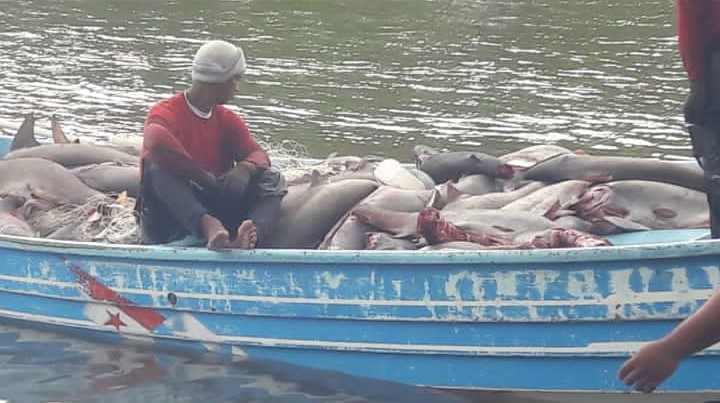 Overfishing is a major threat to shark and ray populations worldwide. Michael Bolton
Overfishing is a major threat to shark and ray populations worldwide. Michael Bolton
In terms of systemic threats, overfishing is the most common threat to all vulnerable shark species around the globe. Nevertheless, habitat loss, climate change, and pollution also factor in. Today, 37% of all known shark and ray species are threatened with extinction, explained PADI AWARE Foundation’s Associate Director, Policy and Campaigns Ian Campbell. This makes them the second most threatened group of animals behind amphibians.
How not to be wrong about sharks
Turning the Tide
To combat this drastic decline, PADI and PADI AWARE hope to reduce the number of shark and ray species threatened with extinction by 25% by 2030. This initiative is part of their Blueprint for Ocean Action, which aims to drive forward essential conservation measures. Below are some key shark conservation campaigns.
1) International Collaboration Driven by Divers
After I quit law, I retreated to the coastal city of Rio de Janeiro to be closer to nature. In contrast to the concrete jungle of Los Angeles, everything felt so alive. Those jungles and waters teemed with diversity and wildlife.
Additionally, Brazilians I met took great pride in the natural richness of their country. This same pride pushed forward a significant victory for mako sharks in the Atlantic in November 2021 – one driven primarily by scuba divers in Brazil, South Africa, and the US. For the next two years, a retention ban will be in place for North Atlantic shortfin makos.
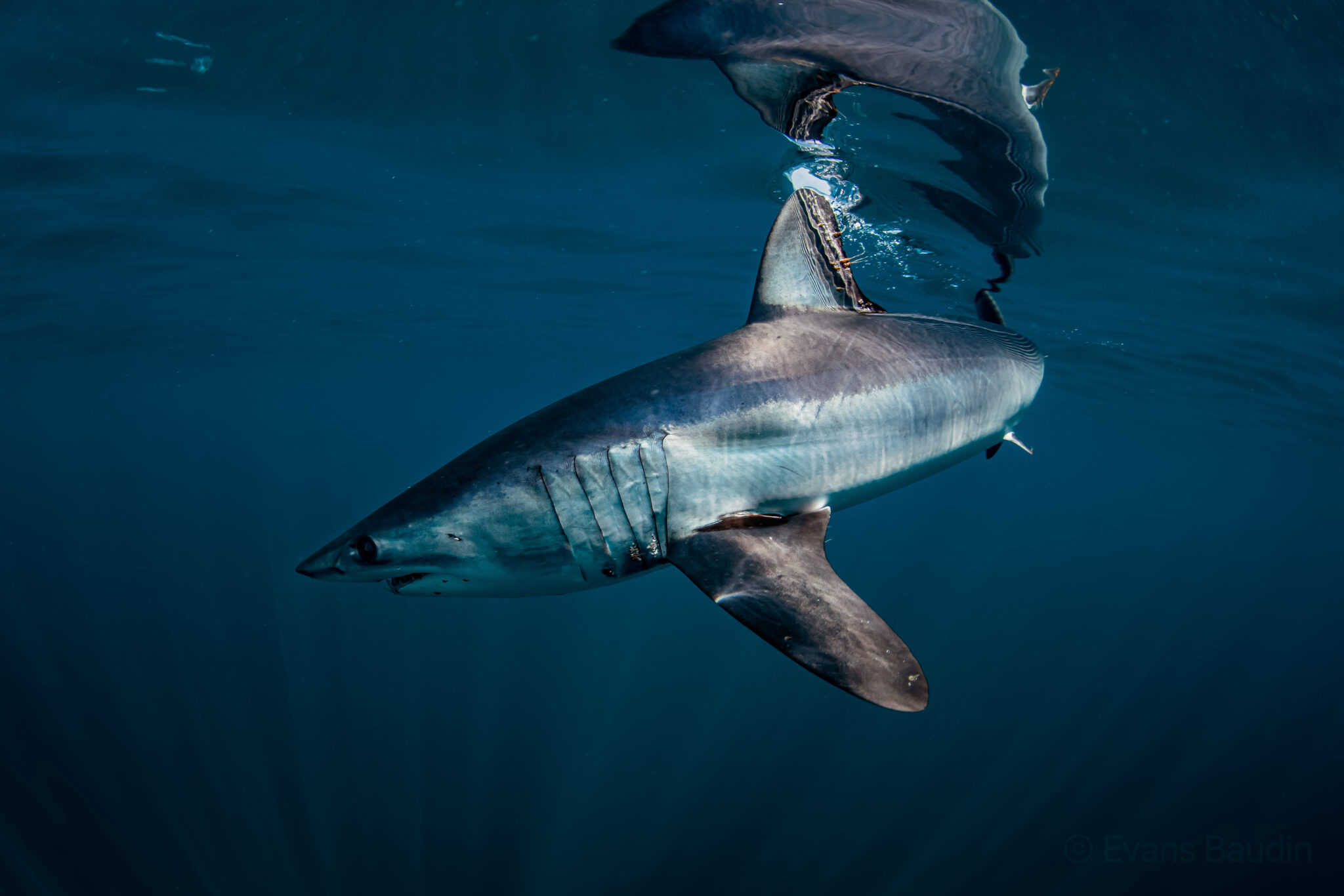 Although rarely seen by divers, mako sharks are vital to their ecosystems. Evans Baudin
Although rarely seen by divers, mako sharks are vital to their ecosystems. Evans Baudin
“Mako sharks are like the cheetahs of the shark world,” Campbell told me. “They are built for speed” and even have built-in “spoilers” that allow some species to reach up to 35 mph. Unfortunately, this also makes them appealing to recreational fishers to catch, and their fins and meat are also valuable, he added.
“[F]ishery scientists studying mako sharks … suggested that populations were so low that the only course of action to stop them from dying out in the Atlantic was a total ban on retention on board,” Campbell said. “Even if implemented immediately, it would still take Atlantic mako populations decades to recover to a healthy population.”
Mega Moves for Makos
Historically, retention bans didn’t receive the consensus needed to pass. However, in 2019, mako sharks “upgraded” from Vulnerable to Endangered on the IUCN Red List. Subsequently, this move pushed International Convention for the Conservation of Atlantic Tuna (ICCAT), which is responsible for managing the mako fishery, for considering a two-year ban on North Atlantic shortfin mako sharks.
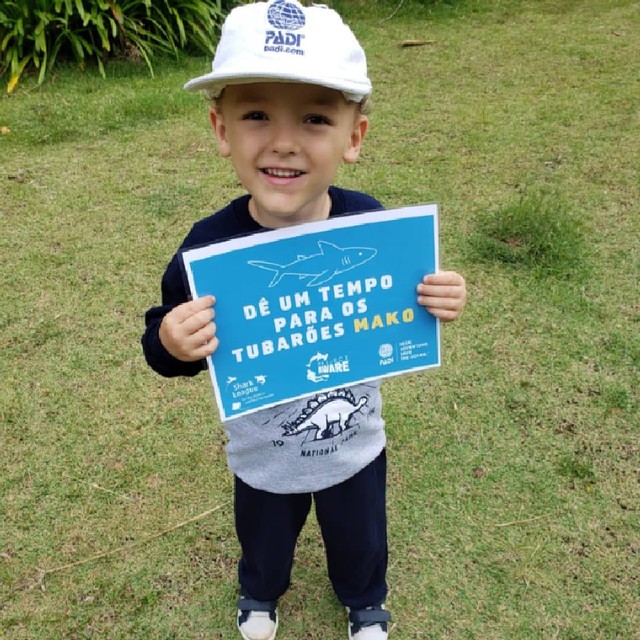 Advocates of all ages joined the campaign to save mako sharks
Advocates of all ages joined the campaign to save mako sharks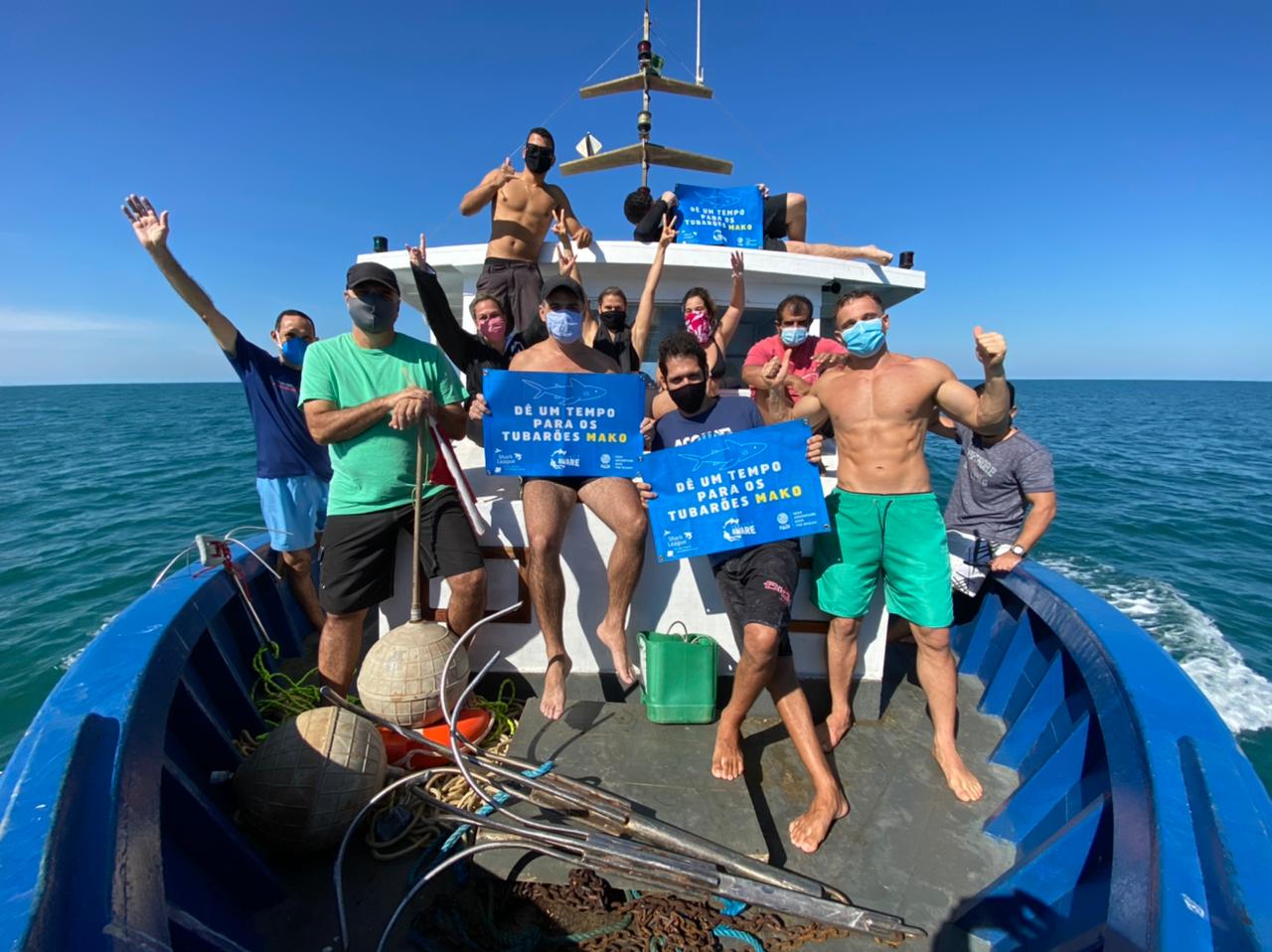 Brazilian divers advocated for increased protections
Brazilian divers advocated for increased protections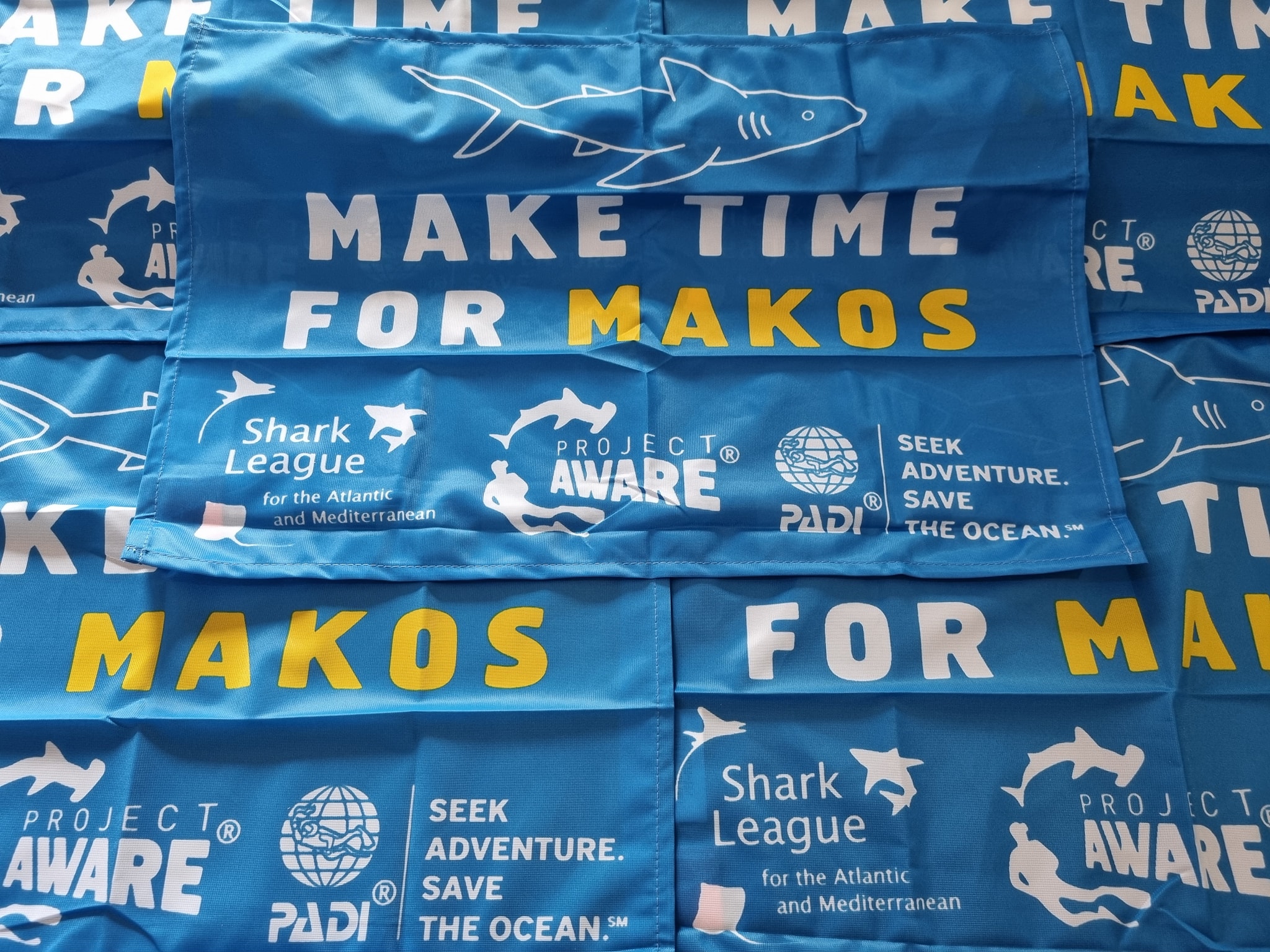 Dive operators were the center of the effort to save sharks
Dive operators were the center of the effort to save sharks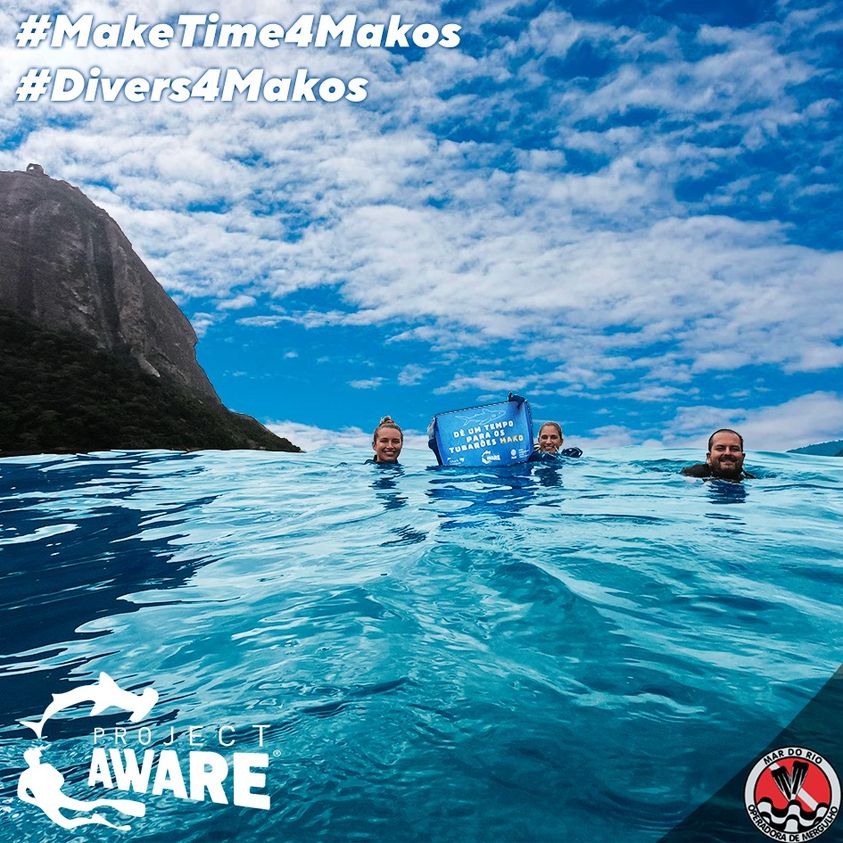 Divers in Brazil campaign for Makos
Divers in Brazil campaign for Makos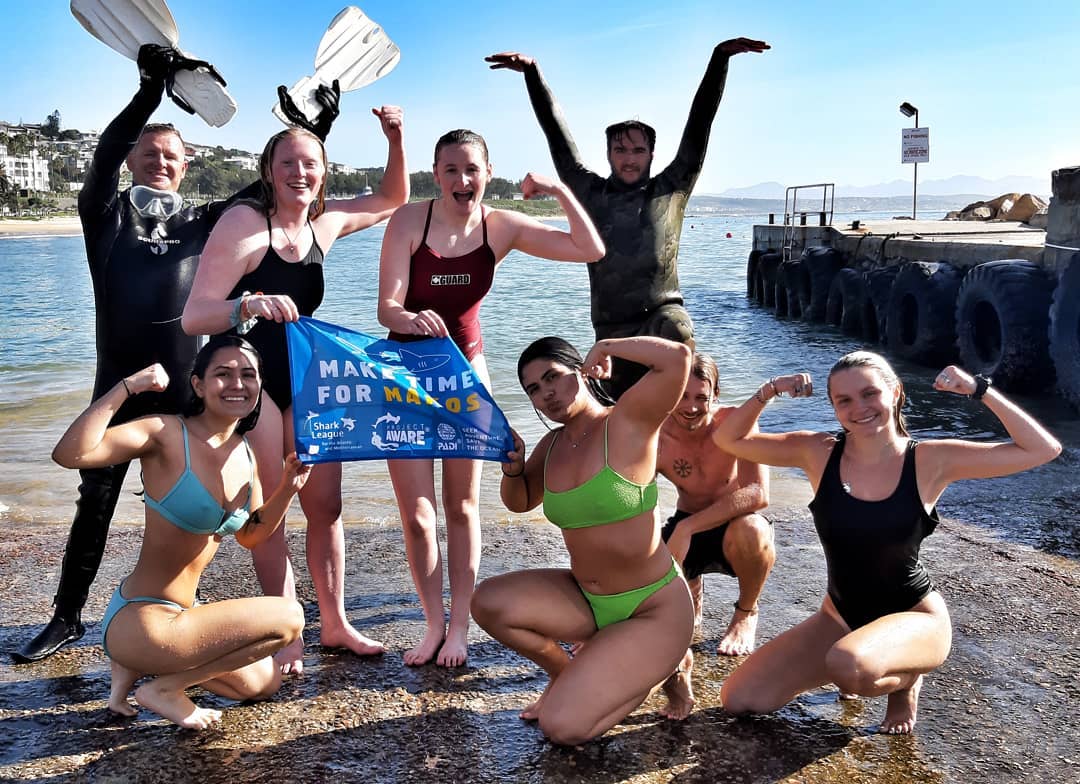 Divers in South Africa urged their government to protect mako sharks.
Divers in South Africa urged their government to protect mako sharks.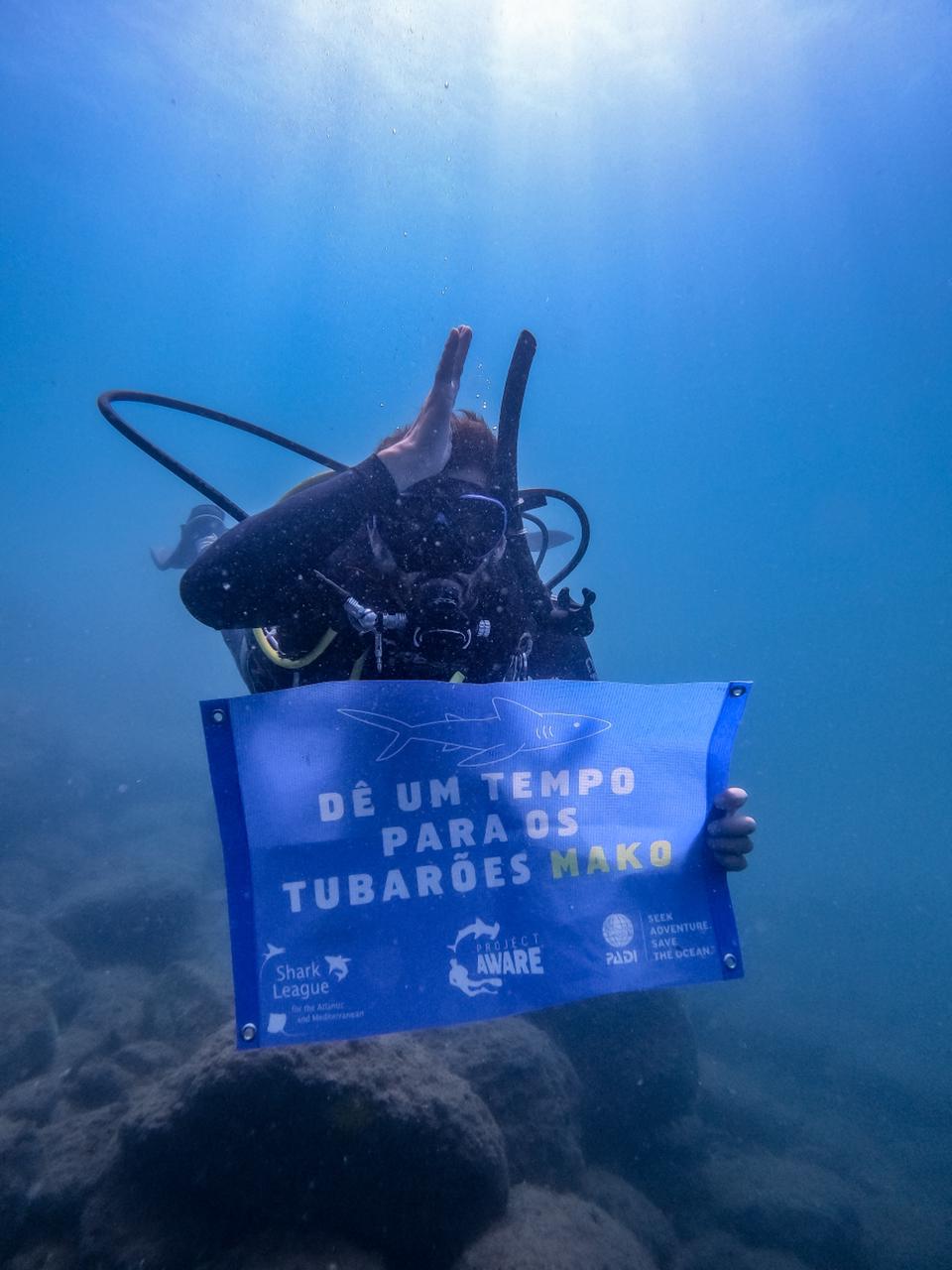 The international sign for shark
The international sign for sharkFor passage, the ban required the consensus of all party countries. When Brazil and South Africa remained non-committal, PADI dive operators and divers from both countries campaigned hard to support the ban. Campbell said that a “groundswell of support” convinced decision-makers of the value of makos, and the endangered sharks finally caught a break.
“While two years is not enough time for populations to recover, it’s a welcome start,” the shark expert added. “PADI divers were taking local actions to try to make a global impact,” and they succeeded.
Responsible shark and ray tourism
2) Increasing the Pressure in Panama
More recently, efforts have increased to extend protections further and to more species.
In 2020 and 2021, I joined National Geographic explorer and conservation biologist Callie Veelenturf on an expedition in Panama. While interviewing artisanal fishermen in the Archipelago Las Perlas, we saw baby sharks mixed in with their catch. We gasped as tiny hammerheads, reef sharks, and even tigers had their fins and heads removed. These end up at Mercado Mariscos, the main seafood market in Panama City, where the meat is sold as ceviche, and fish tacos, and the fins are prepared for export to other countries.
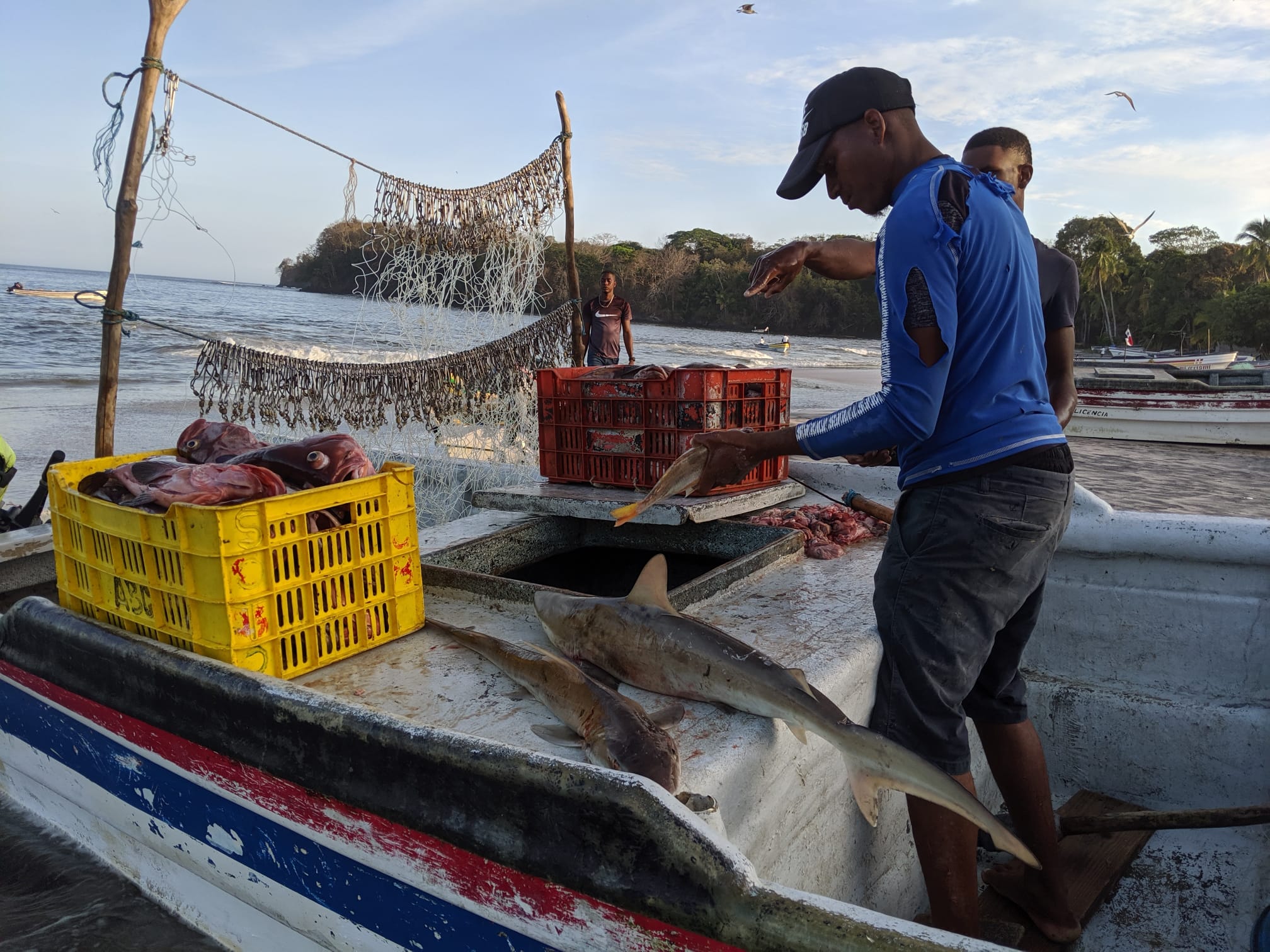 Artisanal fishermen in Las Perlas Islands in Panama regularly bring in baby and juvenile sharks. Tiffany Duong / Ocean Rebels
Artisanal fishermen in Las Perlas Islands in Panama regularly bring in baby and juvenile sharks. Tiffany Duong / Ocean Rebels
Veelenturf and conservation videographer Michael Bolton have documented how extensive the shark fishing problem in Panama is. Bolton regularly observes endangered scalloped hammerheads intentionally fished on their migrations to Panama and their pups netted in the mangroves – “caught by the thousands daily.” He laments the “local Panama problem of literally no shark protection at all” and worries for the future of all shark species.
Just Getting Started
Coincidentally, the 19th Conference of the Parties (CoP) of CITES takes place in Panama this November, and the host country has an exciting proposal.
Campbell explained that when a species is put on CITES, international trade in products derived from that endangered species face tighter controls. Should any proposals pass, fishing for listed species would still be legal within domestic borders, but international trade would be banned.
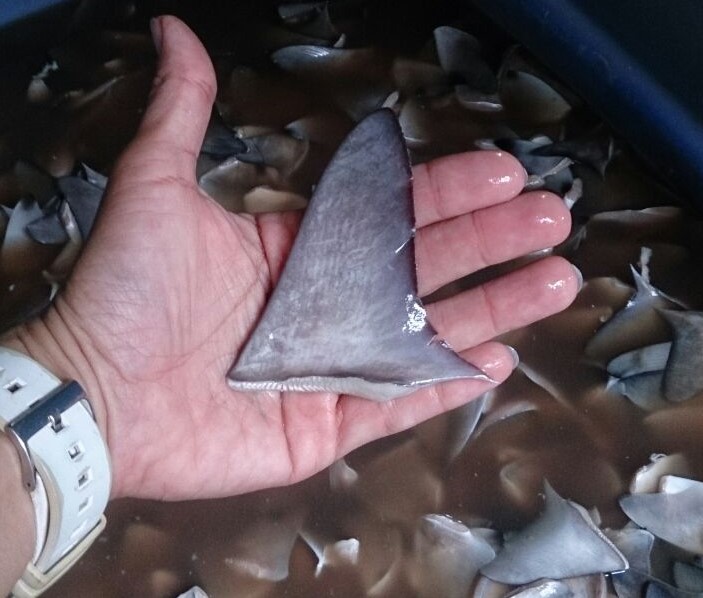 Michael Bolton of “Twin Oceans Research” explores some of the shark products at Mercado Mariscos in Panama City. Michael Bolton / Twin Oceans Research
Michael Bolton of “Twin Oceans Research” explores some of the shark products at Mercado Mariscos in Panama City. Michael Bolton / Twin Oceans Research
Due to the work of advocates like Veelenturf and Bolton, Panama has proposed adding 54 species of “requiem” sharks to CITES this year. These include blacktip reef, grey reef, silvertip, bull, and whitetip reef sharks – species that divers enjoy seeing while diving.
“This is the biggest proposal for sharks ever put forth under CITES,” Campbell said. “It really highlights the urgent nature of the extinction risk of sharks that divers see and have seen in their travels.”
“While it is a significant first step, getting a species listed is the beginning of the conservation effort as opposed to the end,” he added. “A CITES listing of a shark or ray species can act as a springboard for wider conservation measures…” such as fishing limits, habitat protection, or other conservation measures. This is where PADI AWARE will focus immediately after CITES, Campbell said.
3) A Collective Effort for a Better Future
These wins show us that the needle for shark conservation is shifting. At pivotal moments like these, I like to celebrate and then highlight tangible steps individuals can use to push the conversation further – because there’s still so much work to be done, and we each can and must do our part.
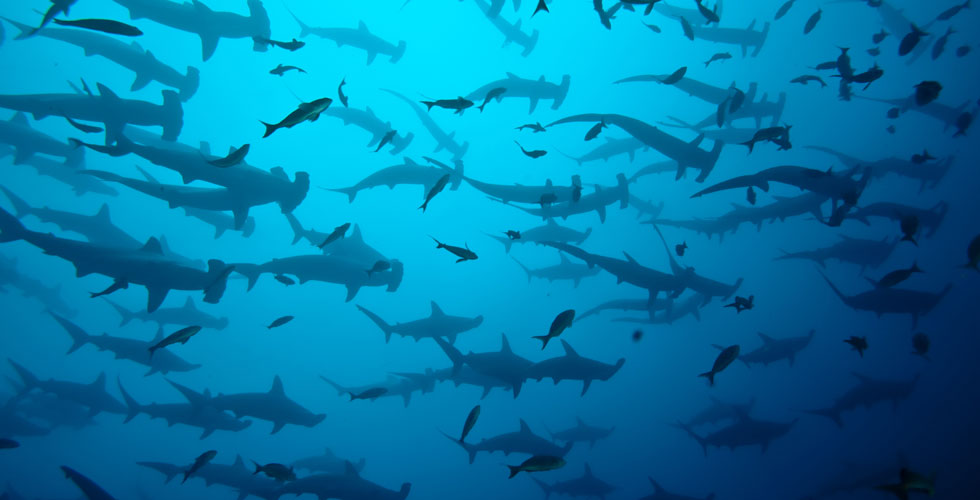 Schools of sharks are becoming rarer and rarer, but increased protection and conservation efforts could turn the tide.
Schools of sharks are becoming rarer and rarer, but increased protection and conservation efforts could turn the tide.
“We have a track record, and we’ve had these huge wins,” Campbell said. “CITES is important, but it’s not game over. It’s game started. In 2023, we’re launching a program that will allow PADI divers and operators to multiply the mako win.”
Campbell is referring to the new Global Shark Census, set to debut next year. This initiative borrows from the hugely successful Dive Against Debris citizen-science program and adapts it to sharks. Therefore, any dive can become a shark survey dive within this framework. Furthermore, participants will help collect vital, real-time information on shark populations.
“Now, divers of all levels can get their fins and tanks in to do something,” Campbell said. “They will be able to turn their passion into much-needed research, providing the impetus for more effective and tailored conservation efforts.”
Become an AWARE shark conservation diver
What Can You and I Do for Sharks?
Whew, that was a lot! To recap, there is so much that we, as individuals, can do to help sharks. I know that I’ll be out there surveying the seas and pushing for more protection. Will you join me?
Here’s how:
Become a certified AWARE Shark Conservation Diver to learn more about the important role that sharks play in the marine ecosystem, as well as what challenges they face and what we can do Second, stay abreast of local PADI operators’ efforts to protect native shark and ray populations like Brazil, and South Africa did for mako sharks Also, become shark advocates and lend support to local, national, and international policies and protections for sharks like the CITES listing Finally, directly contribute data about where sharks and rays live through the upcoming PADI AWARE Global Shark CensusKeep Reading
Share This
